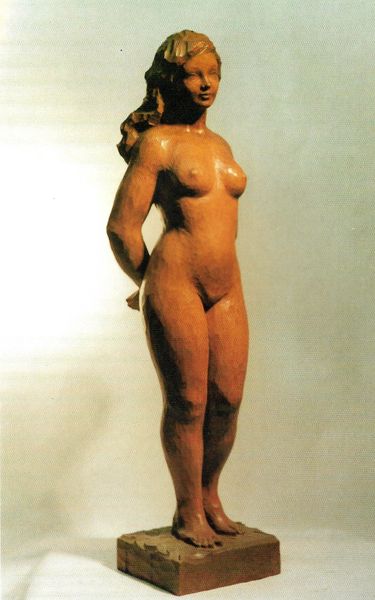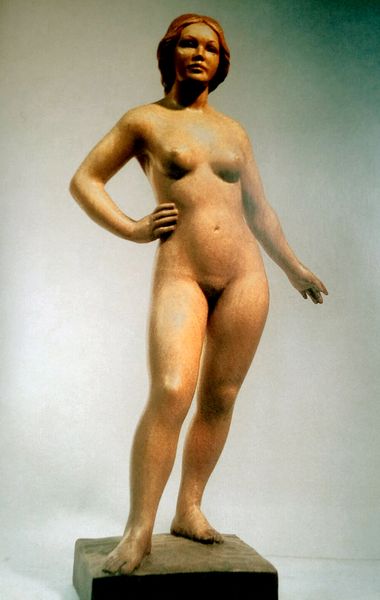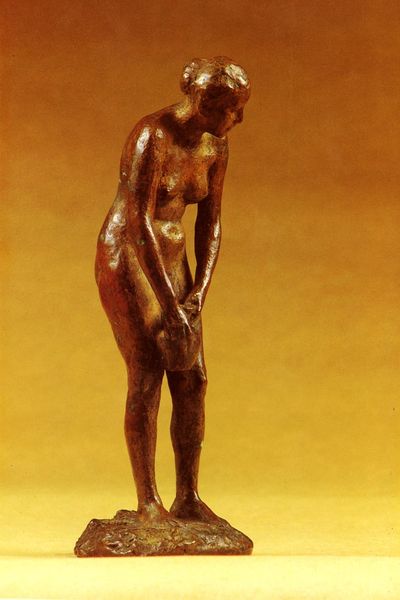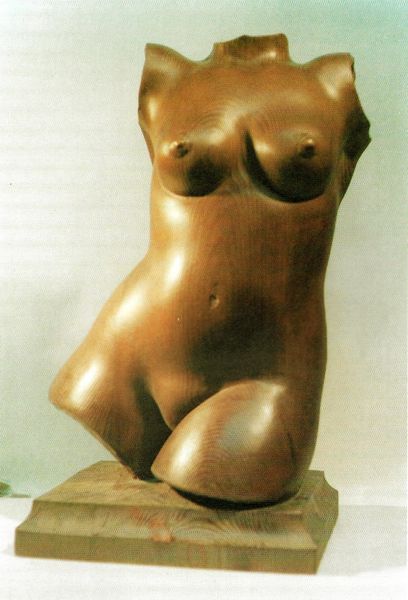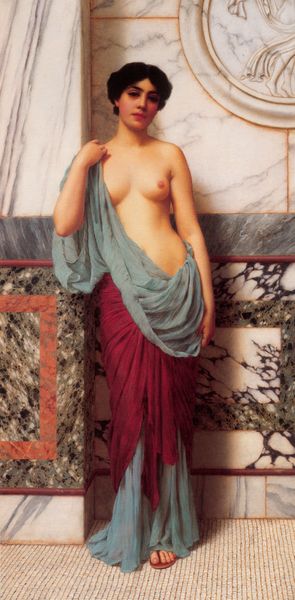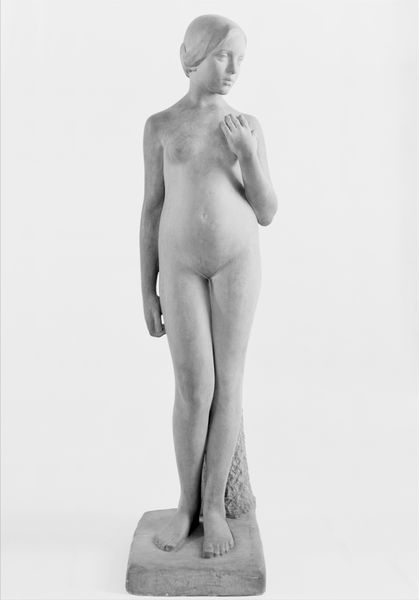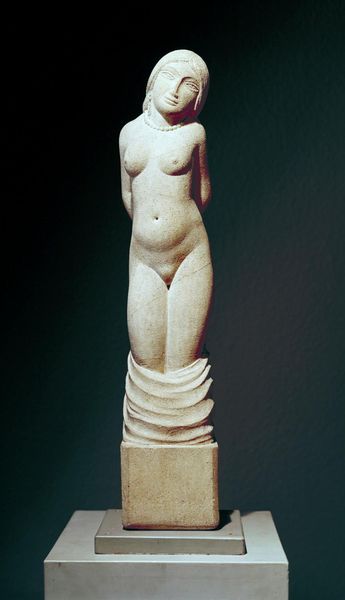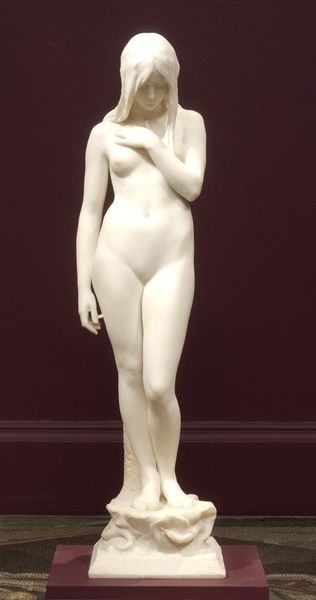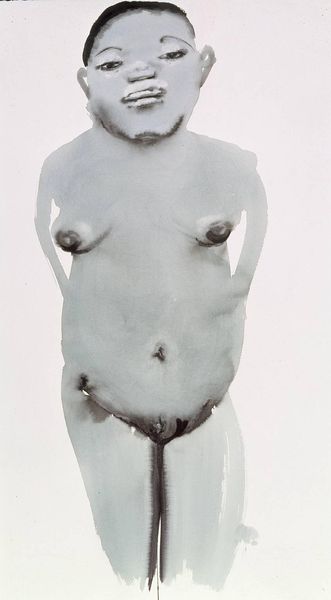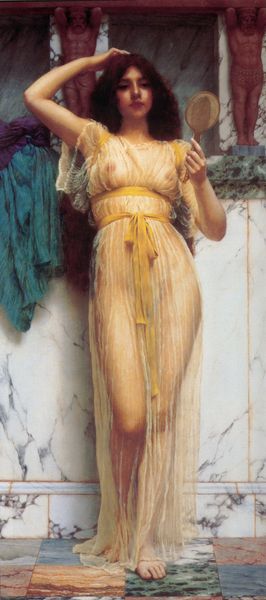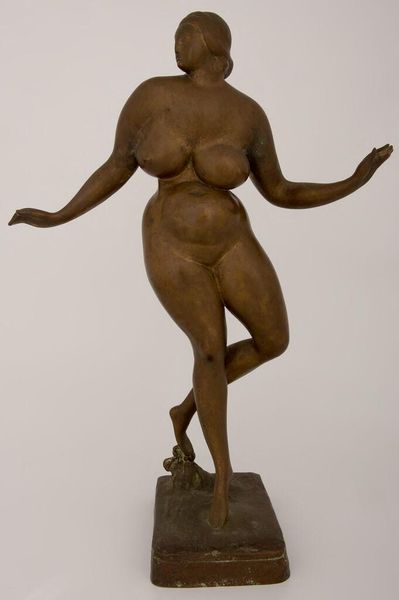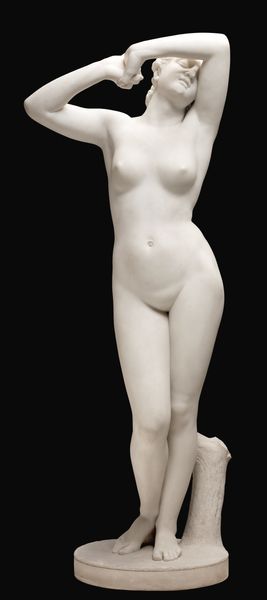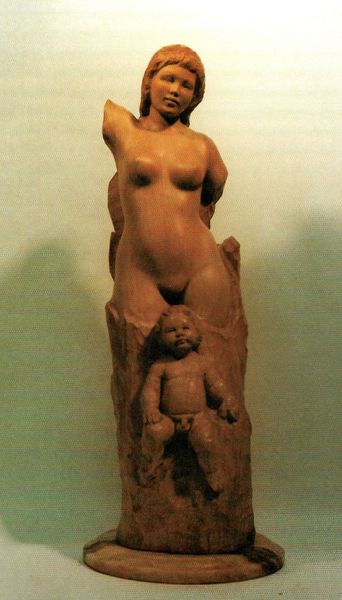
carving, sculpture
#
statue
#
carving
#
classical-realism
#
figuration
#
sculpture
#
nude
#
portrait art
#
self portrait
Copyright: Francisco Serra Andrés,Fair Use
Editor: We're looking at "Desnudo en Ropaje," a carving, most likely in wood, by Francisco Serra Andrés. I'm really struck by how this classical, idealized form is still partially cloaked—there's this tension between revealing and concealing that makes me wonder, what is the artist trying to communicate here? Curator: It's crucial to consider the context in which such a piece is created and displayed. Who is the intended audience, and what values are being projected? The partial covering you mention, for instance, might serve to navigate the social and political sensitivities around depicting the nude. How does this drapery function as a mechanism of both censorship and allure? Editor: That's a really interesting point. So, is the artist maybe commenting on the viewer's gaze, drawing attention to the act of looking itself? Curator: Precisely. Furthermore, we should reflect on how this sculpture might function within a museum setting. Does its placement within a particular gallery—say, one dedicated to classical works or to contemporary figuration—affect how we interpret its message? Are we invited to admire its formal qualities, or to interrogate its representation of the human body? The political nature of such depictions should not be ignored, even today. Editor: I hadn’t considered the gallery space as influencing our perspective so directly. So, the power dynamics are constantly in play between the artist, the viewer, and the institution itself. Curator: Yes, absolutely. By critically examining the artwork through this lens, we gain a greater understanding of the social and ideological currents at play. What seemed to be a traditional form is a result of social conventions. Editor: Thanks, it’s really interesting to think of it in that way. Curator: My pleasure!
Comments
No comments
Be the first to comment and join the conversation on the ultimate creative platform.
